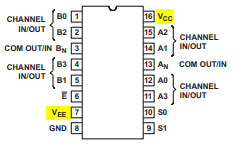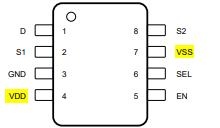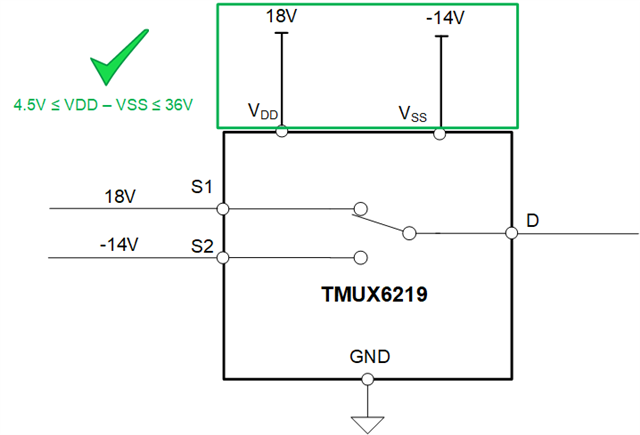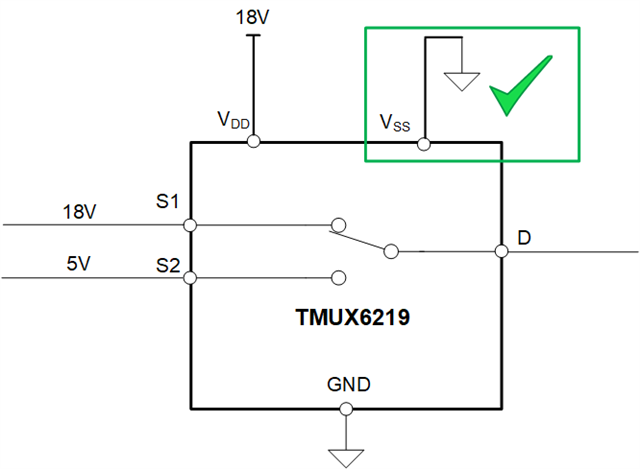Many of TI’s Analog Multiplexers and Signal switches offer the ability to not only pass positive signals, but negative signals as well. These types of devices are referred to as dual supply switches/multiplexers. They are usually identifiable by the device having a separate supply rail named either VSS, VEE, or V- in addition to the VDD, VCC, or V+ rail.



Dual rail switches/multiplexers allow for passing both positive and negative signals, but also offer flexibility in which they can be setup in asymmetrical applications. As long as they adhere to the recommended operating conditions regarding the voltage differential between the positive and negative supply rails, they can support any supply within those bounds. For instance, the TMUX6219 has a recommended operating conditions table that outlines what these bounds could look like:

In the table, it shows that the supply differential (VDD – VSS) can be upwards of 36V. This means the supply rails can have any voltage as long as they do not have a supply differential greater than 36V (and greater than the minimum voltage as stated by footnote 1). In addition, the VDD/VSS voltages must stay within their respective recommended supply ranges as well. As an example, the TMUX6219 can have rails of VDD = 8V and VSS = -12V (20V differential) or even VDD = 18V and VSS = -14V (32V differential) and operate without issue:

While most datasheets will not have parametric data referencing these unique supply combinations, it is recommended to approximate the performance by referring to the nearest VDD-VSS differential range.
However, just because these devices include this extra supply rail, does not mean it has to be utilized. If there is a switch/multiplexer that has all the required specifications and performance needed for a particular application, but has this negative supply rail, the device can still be used in single supply mode by tying the negative rail to GND (do not float this pin). Below illustrates an example using the TMUX6219:


